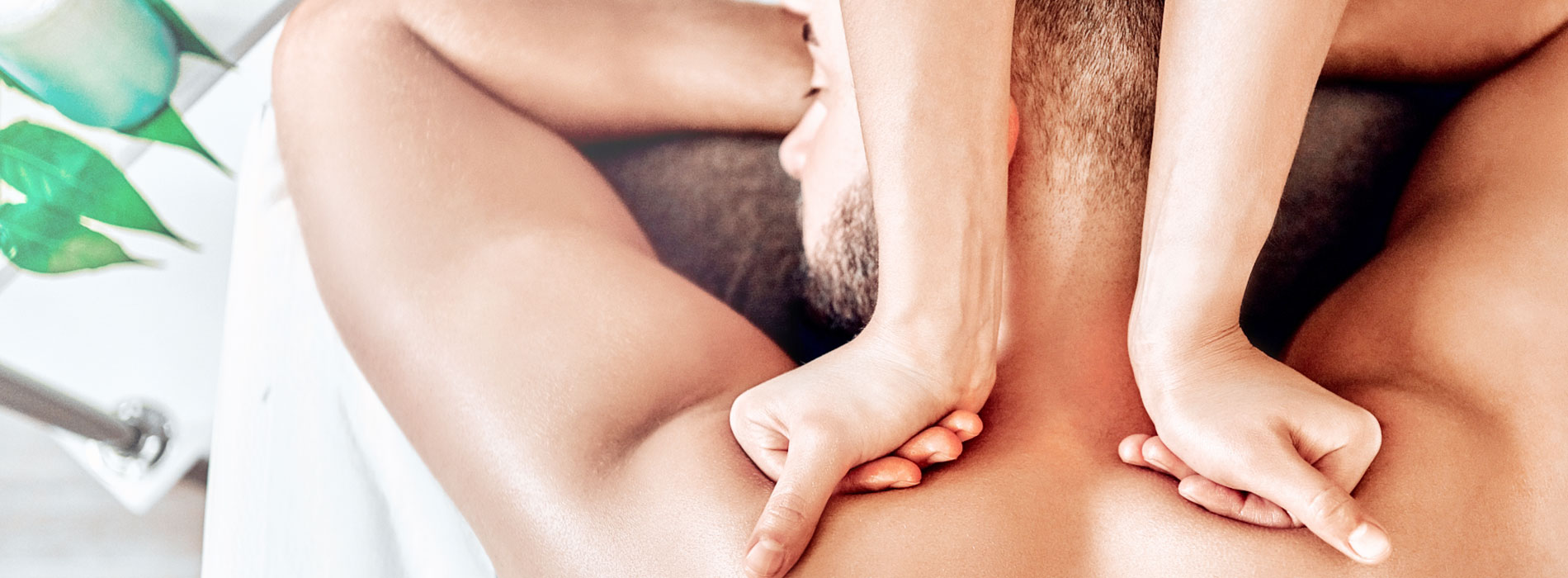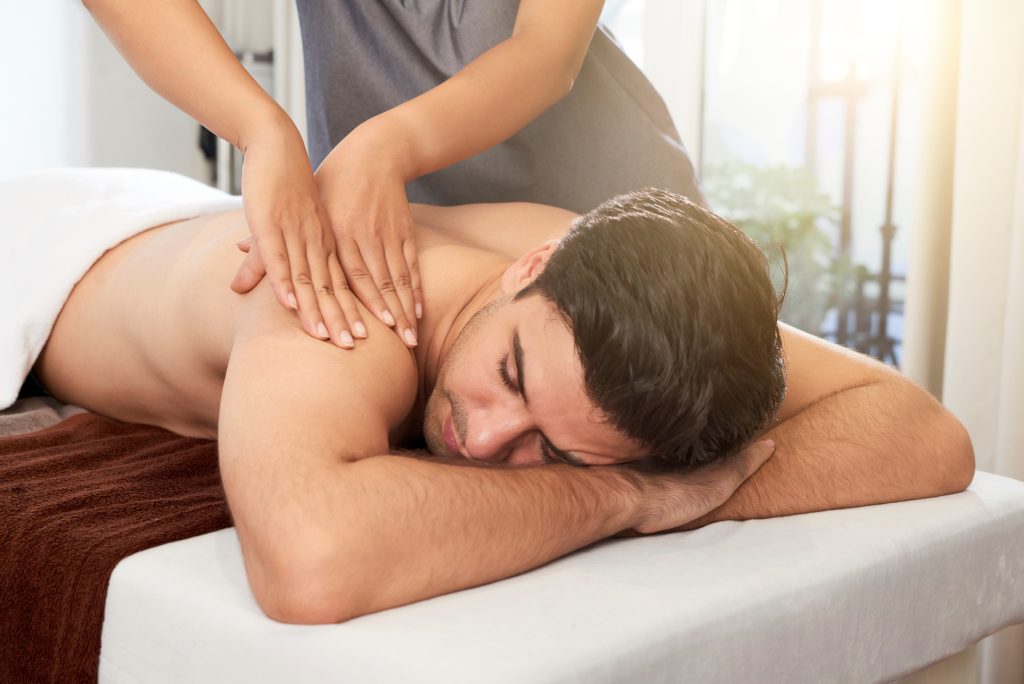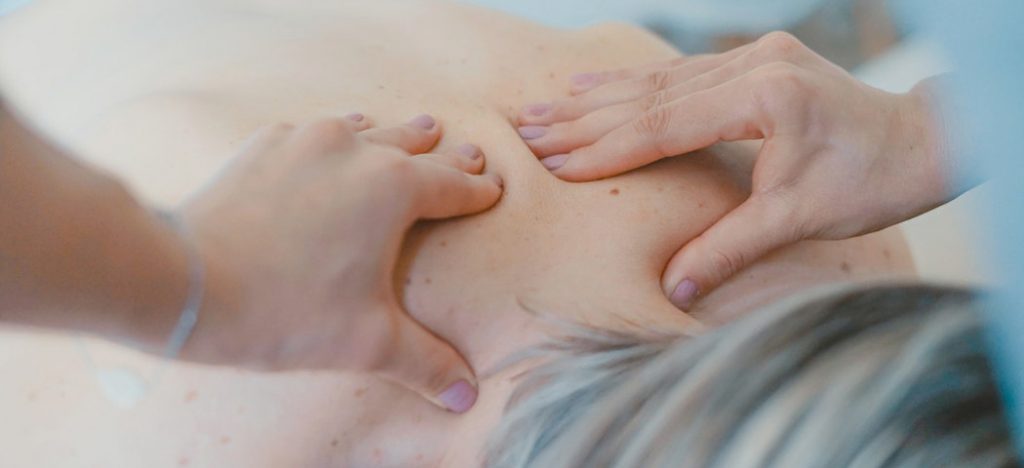
Chinese massage, also known as Tui Na, is one of the fundamental treatment modalities in Traditional Chinese Medicine (TCM), along with dietary regulation, herbal medicine, acupuncture/moxibustion, and therapeutic exercise. Chinese massage has been used for medical purposes in China for centuries. It goes back about 4,000 years. Written massage textbooks began to appear as early as the fourth century b.c., along with the earliest Chinese medical texts. It is now becoming popular in the West as a means of treating a wide range of health problems.

Chinese massage is a systematic assessment and treatment of the muscles, tendons, ligaments and connective tissues of the body to assist in rehabilitation, pain and injury management. It is not generally used for pleasure and relaxation, but rather as a treatment to address specific patterns of disharmony.
TCM practitioners think body energy must continuously flow to prevent stress and disease. They manipulate the meridian system (inner energy points and pathways) to encourage the flow of “qi” (body energy) and blood throughout the body. Like acupuncture, TCM uses remedial massage to harmonise yin and yang in the body by manipulating the Qi in the acupuncture channels. TCM practitioners balance their clients’ Qi by clearing energy pathways called jing luo of blockages that cause pain and disease. They identify pathways with limited flow and use hand pressure to restore balance and energy circulation. In TCM pain is an indication that Qi is blocked or stuck. A Chinese massage therapist aims to remove blockages from the meridians (invisible pathways in the body on which Qi flows) and stimulate the flow of Qi.
To perform Chinese massage, the TCM practitioner uses a variety of hand techniques to manipulate the soft tissue of the body. It also employs acupressure to redirect the flow of Qi in the body and manual skeletal manipulation techniques to realign the bones and muscles in the body for optimal alignment. The aim of this massage is to address muscle tension using a treatment plan to reposition any misaligned bones or joints, and improve the blood flow to the affected areas.

Chinese massage therapy is a holistic approach to health care that not only provides relief from physical ailments, but also relaxes and revitalises the body and mind. It provides relief from chronic pain and improves the strength and flexibility of the various parts of the body. Chinese massage aims to balance the length, tone and tension of muscles and tendons, which restores the correct position of the bones, increases blood flow and helps heal injuries. It can help remove layers of emotional stress while breaking down scar tissue, increasing range of motion, and reducing pain. Easing and stabilising the muscles can help with problems such as headaches, abdominal pain, low back pain and sciatic pain. Regular remedial massages can reduce the risk of injury that may occur in everyday activities (work or recreation), and help maintain optimal physical condition.
The benefits from Chinese massage therapy are not only physical. Chinese massage may also relax and re-energise the mind. It may also be an excellent way of removing all the accumulated stress and tension from the body and the mind. These massages may help rejuvenate and relax the mind from day to day stress.
For more information regarding Chinese massage in Perth, please call your closest location (Perth clinic: 57/76 Newcastle Street (08) 9228 8828, Subiaco Clinic: 6/1 Sheen Street (08) 9380 4171). Alternatively, you can send us your queries through our online contact page.
Chinese massage, also known as Tui Na, is one of the fundamental treatment modalities in Traditional Chinese Medicine (TCM), along with dietary regulation, herbal medicine, acupuncture/moxibustion, and therapeutic exercise. Chinese massage has been used for medical purposes in China for centuries. It goes back about 4,000 years. Written massage textbooks began to appear as early as the fourth century b.c., along with the earliest Chinese medical texts. It is now becoming popular in the West as a means of treating a wide range of health problems.

Chinese massage is a systematic assessment and treatment of the muscles, tendons, ligaments and connective tissues of the body to assist in rehabilitation, pain and injury management. It is not generally used for pleasure and relaxation, but rather as a treatment to address specific patterns of disharmony.
TCM practitioners think body energy must continuously flow to prevent stress and disease. They manipulate the meridian system (inner energy points and pathways) to encourage the flow of “qi” (body energy) and blood throughout the body. Like acupuncture, TCM uses remedial massage to harmonise yin and yang in the body by manipulating the Qi in the acupuncture channels. TCM practitioners balance their clients’ Qi by clearing energy pathways called jing luo of blockages that cause pain and disease. They identify pathways with limited flow and use hand pressure to restore balance and energy circulation. In TCM pain is an indication that Qi is blocked or stuck. A Chinese massage therapist aims to remove blockages from the meridians (invisible pathways in the body on which Qi flows) and stimulate the flow of Qi.
To perform Chinese massage, the TCM practitioner uses a variety of hand techniques to manipulate the soft tissue of the body. It also employs acupressure to redirect the flow of Qi in the body and manual skeletal manipulation techniques to realign the bones and muscles in the body for optimal alignment. The aim of this massage is to address muscle tension using a treatment plan to reposition any misaligned bones or joints, and improve the blood flow to the affected areas.

Chinese massage therapy is a holistic approach to health care that not only provides relief from physical ailments, but also relaxes and revitalises the body and mind. It provides relief from chronic pain and improves the strength and flexibility of the various parts of the body. Chinese massage aims to balance the length, tone and tension of muscles and tendons, which restores the correct position of the bones, increases blood flow and helps heal injuries. It can help remove layers of emotional stress while breaking down scar tissue, increasing range of motion, and reducing pain. Easing and stabilising the muscles can help with problems such as headaches, abdominal pain, low back pain and sciatic pain. Regular remedial massages can reduce the risk of injury that may occur in everyday activities (work or recreation), and help maintain optimal physical condition.
The benefits from Chinese massage therapy are not only physical. Chinese massage may also relax and re-energise the mind. It may also be an excellent way of removing all the accumulated stress and tension from the body and the mind. These massages may help rejuvenate and relax the mind from day to day stress.
For more information regarding Chinese massage in Perth, please call your closest location (Perth clinic: 57/76 Newcastle Street (08) 9228 8828, Subiaco Clinic: 6/1 Sheen Street (08) 9380 4171). Alternatively, you can send us your queries through our online contact page.

© Copyright 2022. Baolin Acupuncture & Chinese Medicine Centre. All Rights Reserved.